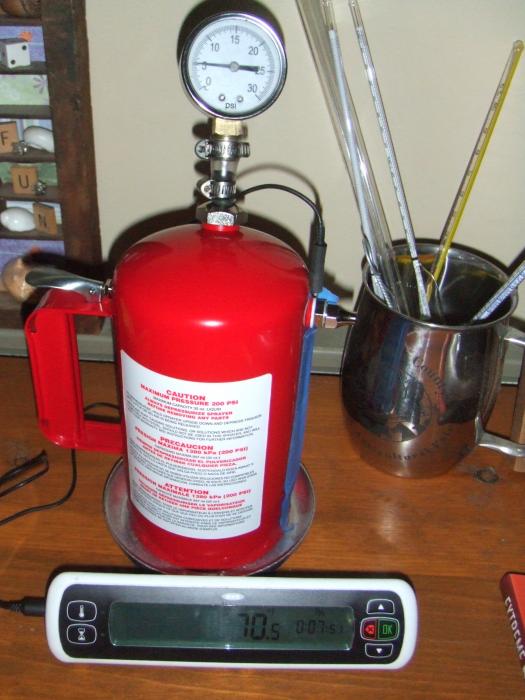I'm siding with Bobby on this one. In fact, I was going to post that along with my other post, but after getting started found it hard to get into words. I'm less medicated now.
I think the yeast, beer, and everything else is at an equal pressure, including the gas produced. So it makes sense that anything coming out of the walls of the yeast cells is in solution. It might even be this way for beer that is at normal pressure, and that Bubbles, or CO2 GAS, is only formed when several molecules of CO2 come together, when they then float to the surface of the fermenter as a gas (Having enough mass to create a large enough bubble to see and actually rise to the surface.)
I wonder if anyone makes a 1-wire pressure sensor that could be fitted into a bottle cap or some other vessel suitable for a small amount of pressure.
I think the yeast, beer, and everything else is at an equal pressure, including the gas produced. So it makes sense that anything coming out of the walls of the yeast cells is in solution. It might even be this way for beer that is at normal pressure, and that Bubbles, or CO2 GAS, is only formed when several molecules of CO2 come together, when they then float to the surface of the fermenter as a gas (Having enough mass to create a large enough bubble to see and actually rise to the surface.)
I wonder if anyone makes a 1-wire pressure sensor that could be fitted into a bottle cap or some other vessel suitable for a small amount of pressure.



































![Craft A Brew - Safale BE-256 Yeast - Fermentis - Belgian Ale Dry Yeast - For Belgian & Strong Ales - Ingredients for Home Brewing - Beer Making Supplies - [3 Pack]](https://m.media-amazon.com/images/I/51bcKEwQmWL._SL500_.jpg)













 The top and bottom of the bottle pretty much pressurize together as a sealed unit, but the CO2 starts in the beer.
The top and bottom of the bottle pretty much pressurize together as a sealed unit, but the CO2 starts in the beer. 
